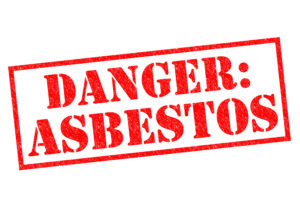From the 1900s to the early 2000s, almost every product contained asbestos. Not only could you find this toxic mineral in thousands of household, commercial, and construction products, but it was often used in concrete, cement, pipes, fireproof coatings, lawn furniture, and even clothing such as hats and gloves. Sadly, exposure to these asbestos-containing products resulted in deadly health issues, devastating diseases, and cancer.
Finding out you have a terminal disease due to asbestos exposure is heartbreaking news for any person and their family. These patients often have numerous worries about the future, their ability to survive their fatal diagnosis, and how they can pay their astronomical medical expenses.
However, the Asbestos Exposure Attorneys at Dolman Law Group Accident Injury Lawyers, PA are here to tell you that you do not have to go through this ordeal by yourself. We are ready to take on your asbestos claim and fight for the justice you deserve.
Asbestos - Why Is It Bad?
Asbestos is a grouping of six naturally occurring minerals made up of soft, thin, flexible fibers. These specific qualities make this mineral extremely useful, as it offers chemical and heat resistance, strength, and fireproofing. In addition, asbestos acts as an insulator in cloth, cement, plastic, and other materials to make them stronger. However, even though asbestos provides numerous benefits. When broken up, and the dust is ingested or inhaled, these mineral fibers permanently become trapped in the body. As a result, asbestos exposure is highly toxic, resulting in specific cancers, asbestosis, and mesothelioma.
Asbestos - Where it Comes From
Asbestos is located around the world in naturally occurring deposits. In the 1960s, asbestos mining was at its height, with more than 100 operating mines across the country. At that point, open-pit mining was the primary practice of removing asbestos from the ground. Once it was released, asbestos manufacturers processed the mineral to create asbestos-containing materials. However, by 2002, the last asbestos mine closed, and now the United States imports most of its asbestos
Drilling during this open-pit mining process released dangerous toxins and fibers into the air. Consequently, workers and even residents near these mines were at risk for asbestos exposure, and many developed mesothelioma and other asbestos cancers because of it.
Asbestos Types
There are six main types of asbestos. They include actinolite, chrysotile, crocidolite, amosite, anthophyllite, and tremolite. These types of asbestos are fibrous and belong to either the amphibole or the serpentine asbestos mineral family. The main difference between the amphibole and serpentine asbestos is its fiber appearance. Amphibole fibers are straight, short, stiff, and needle-like. In contrast, the serpentine fibers are curly, pliable, and long.
Actinolite
Actinolite asbestos has needle-like fibers and is dark brown. It is often made up of other minerals, including magnesium, silicon, and iron. Even though this asbestos is rare, it is found in the following products: cement, different types of paint, insulation, drywall, and certain kinds of sealants.
Anthophyllite
Anthophyllite asbestos is typically yellow or brown and has long, needle-like fibers containing iron and magnesium. Because anthophyllite is one of the rarest types of asbestos, it is not often found in commercial goods. On rare occasions, anthophyllite asbestos is used in certain insulation materials and possibly cement.
Amosite
Amosite asbestos is brown and has brittle, sharp, and needle-like fibers. As it is particularly resistant to flames and heat, amosite is common in many construction materials that require fireproofing. In fact, amosite makes up around 5 percent of asbestos used in buildings throughout the country. Amosite was also quite prevalent throughout the shipyard industry. According to the Environmental Protection Agency (EPA), amosite asbestos is the second most used asbestos type in the United States.

It is commonly found in the following products:
- Different Cement Sheets
- Specific Types of Thermal, Electrical, Pipe, and Chemical Insulation
- Types of Fireproof Products
- Roofing and Tiles
- Gaskets and Insulation Boards
Chrysotile
Also known as “white asbestos,” chrysotile asbestos has long curly fibers that wrap around themselves. Its properties make it easy to weave together into a fabric. Chrysotile asbestos is the most common type of asbestos in the country. An estimated 90 percent to 95 percent of asbestos in buildings in the United States contain chrysotile. Chrysotile asbestos was also frequently incorporated into automotive parts and construction materials, as well as navy vessels. Many of the navy ships included insulation made up of chrysotile asbestos because it was ideal for its incombustible and lightweight properties.
Products that contain chrysotile asbestos include the following:
- Specific types of Roofing Materials
- Different types of Cement
- Brake Linings and Brake Pads
- Clutches
- Different types of Plastics, Textiles
- Asphalt and Rubber
Tremolite
Tremolite asbestos has sharp, straight fibers and is mainly composed of magnesium. With its milky white to dark green color, this type of asbestos was not typically used in product manufacturing. However, these tremolite fibers have contaminated talc and vermiculite deposits.
Tremolite asbestos has been found in the following products: specific types of sealants and insulation, cosmetics containing talc, certain plumbing materials, and roofing materials.
Crocidolite
This “blue asbestos” has very sharp, fine fibers. As a result, these crocidolite asbestos fibers are easy to inhale. Some research even states that crocidolite may be responsible for the most asbestos-related illnesses and deaths compared to the other types of asbestos. However, because crocidolite asbestos is not very heat-resistant, it was rarely used in commercial goods. Yet, in limited circumstances, it was found in specific types of tiles, asbestos insulation, and even cement.
Which Asbestos Type Is the Most Dangerous?
Studies suggest that amphibole asbestos is more dangerous than chrysotile. The CDC even indicates that amphibole fibers can stay in the lungs for more extended periods. However, the studies remain inconclusive when it comes to the most dangerous type of asbestos.
Yet, even though there may be varying risks, the bottom line is that all asbestos is toxic and dangerous. No matter which asbestos you are exposed to, it can lead to deadly illnesses or cancer. Accordingly, the Occupational Safety and Health Administration (OSHA) does not regulate asbestos types based on their perceived danger.
OSHA emphasized that their reasons were due to the following:
- Evidence that chrysotile is less toxic was primarily associated with mesothelioma cases. However, this evidence did not justify regulating chrysotile less strictly.
- There is still a similar correlation between amphibole and chrysotile strength concerning asbestosis and lung cancer.
Non-Friable and Friable Asbestos
Asbestos materials are either non-friable or friable. The friability will depend on how easily asbestos is broken down by hand.
Typically, the friable products pose a greater health risk than non-friable asbestos.
- Friable asbestos: Generally, this asbestos can break by hand or crumble, quickly releasing these fibers. Thus, they pose a much greater health risk than non-friable asbestos. Products containing friable asbestos include a specific type of thermal insulation and spray-on coatings and insulation.
- Non-friable asbestos: This asbestos does not crumble or break by hand. Non-friable asbestos typically poses less of a health risk, primarily if it is securely contained within other materials, and it is left undisturbed. Products that contain non-friable asbestos include certain types of roofing felt, some vinyl floor tiles, specific kinds of window glazing, and transite paneling.
Regardless of the risk level, individuals still need to treat this type of asbestos and any asbestos product as a potential health risk. Natural disasters, home renovations, and other types of accidents or incidents may easily disturb the asbestos and lead to asbestos exposure problems.
Asbestos Use Today and Major Concerns
Unfortunately, asbestos is not entirely banned in the United States. Because asbestos is still imported, this mineral is in many products across the country. Additionally, some products are even legally manufactured with small amounts of asbestos.
Consequently, the two major concerns with asbestos include:
Consumer Products
Certain consumer products may contain small amounts of asbestos, even with updated regulations that prevented new products from containing this toxic mineral. Legally, some products may still contain low levels of asbestos. In fact, manufacturers do not even have to disclose asbestos in their ingredients if it is less than 1 percent asbestos.
Some everyday products that may still contain asbestos include cement, specific types of floor tiles, insulation, adhesives, shingles, and drywall.
Older Asbestos Products
Older asbestos products may become exposed to wear-and-tear and damages, which can release this toxic mineral. Many homes and buildings built before 1979 most likely contain asbestos materials, and homeowners and property managers need to remain vigilant.
Asbestos Exposure - Common Occupations

There have been many occupations that have historically put workers at risk for asbestos exposure. These “asbestos occupations” refer to any job or position that potentially exposes employees and workers to asbestos fibers.
These asbestos occupations often involved:
- Workers who worked with materials or products containing the asbestos mineral.
- Workers who worked in buildings or areas containing the asbestos mineral.
- Workers who manufactured products or materials with raw asbestos.
Common asbestos occupations include construction workers, HVAC Workers, car mechanics, those that operate machines, metal workers, railroad workers, certain military personnel, firefighters, shipyard workers, farmers, specific types of engineers, and industrial workers.
The biggest issue with these asbestos occupations and working with asbestos in any workplace is the fibers. Those jobs that required workers to cut, repair, or sand asbestos products created asbestos dust. As a result, these asbestos fibers become airborne, and when individuals breathe or swallow these fibers, they can risk getting incredibly sick. Additionally, those older buildings that contain asbestos materials most likely are now facing wear and tear, which exposes these harmful asbestos fibers.
What makes this situation even worse is that asbestos is odorless and is not typically seen to the naked eye. As a consequence, many individuals and workers do not even know of their exposure.
Secondary Asbestos Exposure
It is not only those who work directly with asbestos-containing products that are at risk. In truth, individuals are even at risk for secondhand asbestos exposure if they come into contact with asbestos fibers from someone who has been exposed. For instance, family members were often exposed when their loved ones came home wearing asbestos fibers on their clothes.
Avoiding Asbestos Dangers
If you want to avoid the dangers associated with asbestos, you need to take specific steps to help prevent this exposure, including:
1. Make Sure to Identify Asbestos Products
Identifying asbestos products is not easy. Many times it requires professionals trained at identifying asbestos to confirm the presence of it.
However, to give you some indication of certain asbestos-containing products, consider:
- Asbestos products were often created before 1979.
- Items that face friction or high temperatures most likely contain this dangerous and toxic mineral.
- Homes built before 1979 need careful inspection.
Even though certain products containing asbestos may be considered safe if adequately contained, health risks can still result when these fibers are exposed. This is often seen in older homes going through renovations or repairs as the asbestos materials may become exposed during the construction process.
2. Be Careful When Removing Asbestos
You should never move, touch, or try to dispose of asbestos or asbestos-containing products on your own. Instead, you need to contact trained and certified asbestos professionals who can correctly identify, handle, and dispose of the material.
3. The Alternatives to Asbestos
Many similar options work just as well as asbestos. Except these products have less severe health side effects. These asbestos alternatives include Amorphous Silica Fabrics, Cellulose Fibers, Flour Fillers, and Polyurethane Foam.
However, before you immediately start using one of these alternatives, make sure you look into their safety, especially the associated benefits and risks. Sometimes these asbestos substitutes can cause other health problems.
Common Injuries/Diseases
Asbestos exposure can result in a multitude of conditions including everything from malignant diseases such as lung cancer, mesothelioma, laryngeal cancer, and even ovarian cancer to non-malignant asbestos diseases that range from conditions such as COPD to pleural thickening. In fact, exposure to asbestos remains the number one reason for work-related fatalities in the world. That is why if you have been exposed to asbestos, it is essential to understand your risks of developing specific diseases that can result from this exposure.
Asbestos Diseases
Asbestos exposure can lead to two major diseases, including cancerous (malignant) and benign conditions. However, just because a disease is labeled as being benign or non-cancerous, it does not mean that it will not be life-threatening.
Cancer directly linked to asbestos exposure. According to the International Agency for Research on Cancer (IARC), there is a proven link between four types of cancer and an individual's asbestos exposure. These malignant tumors are extremely dangerous because they metastasize to other areas of the body and are often very aggressive. They invade other surrounding organs or travel through the lymphatic system to get to other parts of the body, including significant organs such as the brain. Even though doctors may temporarily manage these cancers, they usually kill their victims.
These cancers include:
- Cancer of the Lungs
- Ovarian Cancer
- Cancer of the Larynx
- Pleural Mesothelioma and Peritoneal Mesothelioma
Cancer positively linked to asbestos exposure. Additionally, three types of cancer have a positive link to asbestos exposure. This means that there is some evidence of a link. However, it is not strong enough to say that asbestos is a cause of these diseases.
They include:
- Pharyngeal Cancer
- Colorectum Cancer
- Stomach Cancer
Benign diseases related to asbestos exposure. Asbestos exposure has also resulted in several diseases. Yet, even though these conditions are not malignant, they are still quite severe. When a condition is benign, there is abnormal cell growth. However, it does not spread to other parts of the body like cancer. These diseases, which include pleural plaques and asbestosis, may be managed with specific treatments, but they are often not curable and can eventually result in the patient's death.
These benign conditions resulting from asbestos exposure include:
- Pleural thickening
- Pleural effusion
- Atelectasis
- Peritoneal effusion
- Pericardial effusion
Factors That Can Affect the Risk of Developing an Asbestos-Related Disease
Not everyone exposed to asbestos will develop an asbestos-related disease.
However, several factors can play into an individual's risk of getting an asbestos-related condition, including:
- How much asbestos exposure an individual was subject to.
- The specific size, shape, and chemical composition of the asbestos an individual was subject to.
- How long a person was exposed to the asbestos.
- The particular source of asbestos exposure.
- A person's risk factors, including pre-existing lung disease and whether they smoke.
- A person's genetic factors, including a germline mutation in BAP1.
It is critical to add that all forms of asbestos exposure are hazardous. However, research has found that different asbestos fibers may be associated with varying threats of health. For instance, many studies have shown that amphibole asbestos may be considered more dangerous than chrysotile, as this asbestos tends to stay in the lungs longer.
Malignant Diseases Related to Asbestos Exposure
Research continually shows that there is a significant link between certain types of cancer and asbestos exposure. Sadly, cancers related to this asbestos exposure are often quite deadly and only provide a limited prognosis for survival, especially long-term. What makes these cancerous asbestos diseases so dire is it takes a long time to show symptoms. Consequently, this means that by the time an individual realizes anything is wrong, cancer has usually spread to other parts of the body, making treatments difficult and ineffective.

Lung cancer. Even though medical science still does not understand how exactly asbestos causes cancer. There is abundant proof that it does. In terms of lung cancer, only a small portion of diagnoses are related to asbestos. Yet, it remains one of the most deadly asbestos-related cancers. Since asbestos is mineral-based, it cannot be broken down by the immune system. As a result, healthy cells become damaged, and DNA is changed. As these rogue cells multiply and replace themselves, they end up shutting down the organ and eventually killing the patient.
Symptoms include pain in the chest, unintended weight loss, cough (usually with blood), and wheezing.
Ovarian cancer. Since 2009, studies have confirmed a link between ovarian cancer and asbestos exposure. Unfortunately, once a female is exposed to asbestos, these asbestos fibers can reach the ovaries through the bloodstream, reproductive tract, and even the lymphatic system.
Symptoms of ovarian cancer include pelvic pain, feeling full rather quickly, a need to urinate quite often and urgently, and bloating.
Laryngeal cancer. Laryngeal cancer is a disease in which cancer or malignant cells form in the larynx tissues. It has been proven that there is a direct link between asbestos exposure and this type of cancer, even though heavy alcohol use and smoking are often the principal risks of developing laryngeal cancer.
Symptoms include a long-lasting cough, persistent earache and sore throat, and swelling in the neck.
Mesothelioma. Mesothelioma is a malignant tumor that develops in the thin layers of tissue that covers a substantial part of your internal organs (the mesothelium). This type of cancer is often the result of inhaled asbestos fibers and is extraordinarily deadly and aggressive. Even though there are treatment plans available, as of today, there is no cure.
Mesothelioma is divided into four different types, with each having a unique set of symptoms. These mesothelioma types are split up based on what part of the mesothelium is affected. They include Pleural Mesothelioma (tissue that surrounds the lungs), Peritoneal Mesothelioma (tissue in the abdomen), Pericardial Mesothelioma (tissue in the heart), Testicular Mesothelioma (tissue in the testes).
Symptoms of mesothelioma depend on the type of mesothelioma you are diagnosed with.
However, the more common signs include:
- Pleural mesothelioma: Breath shortness, significant cough, chest tightness, fatigue, and unintentional weight loss.
- Peritoneal mesothelioma: Vomiting and nausea, swelling of the abdomen, abdominal pain, fatigue, and unintentional weight loss.
- Pericardial mesothelioma: Pain in the chest, breath shortness, irregular heartbeat, fatigue, and unintentional weight loss.
- Testicular mesothelioma: Pain in the groin or the testes, mass or lump on the testicles, and swelling in the scrotum.
Other cancers possibly related to asbestos exposure. Many other cancers associated with asbestos exposure include kidney, gallbladder, esophageal, and throat cancer. However, research on the connection between these types of cancer and asbestos exposure remain unclear and inconsistent. Yet, despite the research, scientists believe that asbestos persists as a possible contributor even if it has not been definitively established.
Benign Diseases Related to Asbestos Exposure
Benign diseases related to asbestos exposure tend to be more common than asbestos-related cancers. This is often due to the amount of exposure needed to result in each type of condition. For example, cancer and benign asbestos-related disease can result from exposure to asbestos after just one time.
However, malignant conditions often occur from years of cumulative asbestos exposure.
Asbestosis. Asbestosis is a lung disease that is often chronic. It has been known to develop through inhaling asbestos fibers. Even though this disease is not considered cancer, it can still be fatal. When an individual has prolonged exposure to asbestos fibers, it results in lung tissue scarring and inflammation. As a result, this can lead to breathing issues. What makes asbestosis so harmful is that it prevents the lungs from relaxing and expanding in the way they usually would, which causes breathing difficulties as well as symptoms that include tightness of the chest.
Unfortunately, many times these symptoms do not appear for many years and only after continuous asbestos exposure. As a result, it is challenging to diagnose asbestosis, and by the time it is discovered, damage may be severe. According to some research, asbestosis is frequently found in individuals that work in construction jobs, including pipefitting, painting, and carpentry.
Symptoms can often range from mild to severe and include coughing, chest tightness and pain, and shortness of breath.
Pleural effusion. Pleural effusion is a disease that is sometimes referred to as “water of the lungs.” This disease is a result of a buildup of fluid between the pleura layers outside the lungs. This fluid collects in the chest cavity between the ribs and the lungs and results in lung compression and shortness of breath. Even though pleural effusion is not instantly life-threatening, with time, these effusions interfere with breathing and can cause a lot of pain.
Symptoms of this disease include a dry cough, pain in the chest, shortness and labored breathing, and orthopnea, which is the inability to breathe easily unless an individual is standing up or sitting straight.
Pericardial effusions. Pericardial effusion is the accumulation of extra fluid between the sac surrounding the heart (pericardium) and the heart. This condition is not deadly, but it can lead to the heart not working correctly. Over time this condition causes significant chest pain and difficulty breathing.
Symptoms can include pain in the chest, fast breathing, breath shortness, an increase to an individual's heart rate, and nausea.
Peritoneal effusions. This disease, also referred to ascites, is the result of extra fluid collected in the abdominal cavity. It is similar to pleural effusions in that if the accumulated fluid is not removed, the condition can recur and lead to painful and debilitating symptoms.
Symptoms can include unintended weight gain, abdominal pain and swelling, bloating, nausea, indigestion, breath shortness, and vomiting.
COPD. Chronic Obstructive Pulmonary Disease, or COPD, is an inflammatory and chronic lung disease caused by obstructed airflow from the lungs. Even though an individual's exposure to asbestos is not directly the cause of COPD, it does increase an individual's risk of developing the condition. Those with COPD tend to have an increased chance of developing lung cancer, other asbestos-related diseases, and heart disease.
Symptoms may include difficulty breathing, excess mucus production, an extensive cough, and wheezing.
Diffuse pleural thickening. Diffuse pleural thickening often results from asbestos exposure. This condition results from extensive scarring, which thickens the pleural membrane lining of the chest wall and the lungs. This condition is known to decrease the lungs' function, prevent airflow to the lungs, and ultimately result in a patient's death.
Symptoms usually include feeling breathless, which is mainly because the lungs can no longer expand as a result of the thicker pleura.
Atelectasis. Atelectasis is a condition resulting from a partial or complete collapse of the lung or the lobe of the lung. Even though by itself, it is seldom associated with asbestos exposure. It does often accompany pleural thickening, and in rare instances, it does become an asbestos-associated disorder.
Symptoms include chronic cough, breathing difficulties, and shallow breathing.
Pleuritis. Pleuritis is a disease that results from an inflammation of the pleura or the two thin, broad layers of tissue that separate the chest wall from the lungs. It is often the result of an individual inhaling asbestos fibers. When this inflammation occurs, the pleura's surface becomes rough, and they begin to rub against each other. This rubbing can result in sharp pain in the shoulders or the chest and can worsen when an individual is moving, coughing, or breathing. Pleural effusions can also accompany this condition.
Symptoms of pleuritis often include pain in the chest and shortness of breath.
Pleural plaques. This condition can occur after asbestos exposure. Pleural plaques result from calcified buildups on the pleural membrane. Even though they are not considered a severe health issue, they can make breathing quite difficult. This condition, by itself, does not directly lead to cancer. However, it can become an indicator that a patient has a higher risk of developing cancer in the future.
Many individuals do not show any apparent symptoms of pleural plaques. However, some patients may indicate an uncomfortable feeling or pain as they breathe.
FAQs

Individuals exposed to asbestos not only worry about the possible risks of developing certain asbestos-related diseases. But they also stress about the repercussions this exposure may have on their family, financial situation, and overall quality of life. To help answer some of these concerns, we have prepared the following frequently asked questions many individuals have regarding asbestos exposure and the legal avenues they can pursue. If you have questions about your legal rights after suffering from asbestos exposure, contact Dolman Law Group Accident Injury Lawyers, PA for more information.
1. Is asbestos banned worldwide?
Even though the European Union has banned the use of asbestos and all asbestos-containing products. The United States has not. Asbestos is still allowed in the U.S. in certain products, mainly those where it is unlikely that asbestos fibers will become airborne.
2. What products usually contain asbestos?
Typically, before the 1980s, asbestos was used in thousands of products. These asbestos-containing materials included specific fire-resistant clothing, certain types of spray insulation, and even some hairdryers. Today, asbestos is still used in certain products like paper and plastic goods, gaskets, joint compound, brake pads, floor tiles, and cement. However, this asbestos tends to include fibers that are not friable.
3. What is an asbestos lawsuit?
An asbestos lawsuit or claim refers to a legal claim against a company or entity responsible for injuring an individual due to asbestos exposure. This asbestos claim is filed in a court against a non-bankrupt business that could be legally responsible for an individual's exposure to asbestos. However, if the company responsible for this exposure goes bankrupt, a trust fund may compensate those who suffered an asbestos-related injury.
4. Who can you go after in an asbestos lawsuit?
If you have been exposed to asbestos, several types of companies may be legally responsible for causing you this asbestos-related injury.
They may include:
- Solvent companies that manufactured asbestos products. Many companies sold products containing asbestos. If these companies are solvent, then you may file a lawsuit against them. These companies can include manufacturers of roofing products, siding materials, gaskets, specific types of insulation, valves, floor tile materials, turbines, and even caulking materials.
- Bankrupt companies that manufactured asbestos products. Unfortunately, many companies that manufactured asbestos products entered into bankruptcy proceedings after many asbestos lawsuits were brought against them. However, as a result of the bankruptcy proceedings, these companies were reorganized. Yet, even though they can still do business today, they cannot be sued. Instead, the only remedy against these companies is to go through the trust claims proceedings. These trust funds were created to ensure that future claimants who suffered an injury due to asbestos exposure received compensation for their damages.
- Asbestos products suppliers. You could also go after companies that sold asbestos products through distribution channels or retail stores in some cases. These companies included insulation distributors who sold large quantities of asbestos to commercial sites.
- Contractors who worked with asbestos. Contractors who allowed asbestos-containing products on their construction sites but failed to take reasonable precautions to protect their workers could be liable for any asbestos-related damages.
- Premises owners. A premises' owner may be sued in an asbestos lawsuit. However, it will depend on the case's specific facts, including how the asbestos was used and the role of the premises' owner. Specifically, how they caused or failed to prevent these unsafe property conditions.
- Building engineers. If a company mandated that its workers used asbestos-containing products when they designed a building, they may be responsible for the asbestos-related injuries that resulted from their worker's asbestos exposure. This is especially true if the engineers specified the use of asbestos products, and there were asbestos-free materials of similar utility available.
5. Can multiple entities be responsible for my asbestos-related injuries?
Yes. Most of the deadly asbestos-related diseases are due to an individual's total exposure to asbestos. As a result, many companies could be held legally responsible for these injuries. However, if you want to pursue these claims against multiple defendants, you need to provide persuasive evidence showing the connection between your asbestos injury and each of these companies. That is why it is imperative to contact an asbestos attorney who can get to work right away, collecting evidence, and finding these links. Contact Dolman Law Group Accident Injury Lawyers, PA today to get started.
6. How can you file an asbestos lawsuit?
If you want to file an asbestos lawsuit, you must have an injury related to your asbestos exposure. In certain circumstances, you may file a property damage claim relating to asbestos. But, if you are pursuing a personal injury lawsuit related to asbestos exposure, you need to show that you suffered an asbestos-related injury. Generally, the most common types of injuries resulting from asbestos exposure include lung cancer, asbestosis, and mesothelioma. However, numerous other diseases can also occur.
7. What exactly is an asbestos trust fund?
Asbestos or mesothelioma trust funds were established by asbestos companies who filed for bankruptcy. These court-ordered trust funds compensate current and future victims injured due to asbestos exposure as a result of a company's negligence. Since their creation, these trust funds have had more than 30 billion dollars available for victims. If you consider pursuing an asbestos trust fund claim, speak with an asbestos attorney, like those at Dolman Law Group Accident Injury Lawyers, PA, who can help you go after the money you deserve.
8. Can I file an asbestos trust fund claim with multiple trust funds?
Since numerous companies who created and sold asbestos or asbestos-related products worked with other suppliers or manufacturers, there could be many companies responsible for your asbestos-related disease. As a result, you may file claims with numerous asbestos trust funds. Speaking with a skilled asbestos attorney can help you verify if you have a legitimate claim and help you through the process of pursuing this trust fund compensation against the liable asbestos manufacturing companies.
9. What are asbestos trust fund payment percentages?
The primary purpose of asbestos trust funds is to provide money to future victims of asbestos-related injuries. To make sure this was possible and the trust remained operational for these future victims, payment percentages were created. These payment percentages are unique for each trust, range from 1-100 percent of the claim's full value, and fluctuate with time. To see how this would work in real life, consider a trust fund with a payment percentage of 25 percent. If the claim was liquidated at $100,000, your asbestos trust fund payout would be $25,000.
10. What happens if the trust fund payment percentage changes in the future?
If the trust fund's payment percentage increases, those who previously received trust fund payments should receive additional compensation due to the payment percentage rise. If the trust fund's payment percentage decreases, an individual will not have to pay back any compensation. They can keep their full payments.
11. How much time do I have in Florida to file an asbestos claim?

A statute of limitations determines the length of time a victim has to file a legal claim. These statutes of limitations differ depending on the specific state and the type of case, including asbestos claims. In Florida, the statute of limitations to file an asbestos claim is four years from the date of diagnosis and two years from the date of death. That is why you should speak to an asbestos attorney as quickly as possible. They can help verify if you still have time to file your claim and ensure that your filing is timely.
12. If I do not remember how I was exposed to asbestos can I still pursue an asbestos claim?
Yes. Many individuals pursuing an asbestos claim generally do not remember all the asbestos products they were exposed to, or which companies manufactured them. That is why working with an asbestos attorney can be critical. These attorneys can get to work investigating your background and figuring out which asbestos products you were exposed to, and which companies produced these harmful and toxic products.
13. If I find asbestos in my home or work, should I remove it?
No. Asbestos is extremely hazardous. Whatever you do, make sure you do not touch it or try to remove it by yourself. Instead, you need to hire experts that are well versed in asbestos removal. They can conduct tests to measure how hazardous the asbestos is to your health and then take proper measures if they need to remove it. Their expertise can ensure that the workers and your family are safe during this process.
14. What happens to my asbestos claim if I pass away?
If you pass away before you settle your claim, then your family members could pursue a wrongful death lawsuit and resume the process. These family members can also bring a wrongful death claim in situations where their loved one had an asbestos-related disease but passed away before they could bring a lawsuit against those responsible for their asbestos exposure. However, to bring this claim, your family needs to make sure that the statute of limitations has not expired.
15. Are certain individuals more likely to get an asbestos-related disease?
If you have been exposed to asbestos, you are at risk of developing an asbestos-related disease. However, certain groups of people may be more susceptible to these diseases. They often include individuals who hold certain occupations and have a higher exposure to asbestos. These positions include certain military personnel, mechanics, and even construction workers.
16. Did companies know how dangerous asbestos was and continues to be?
Even though asbestos was used for decades and continues to be used in some capacity, companies were generally aware of the dangers. However, this awareness did not become apparent to individuals in the past because of the lack of proper testing. As a result, many companies could hide these asbestos dangers from their consumers, workers, and the public. Today, many of these companies have finally come out and admitted responsibility for asbestos-related diseases and have also created trust funds to help those exposed to this toxic mineral.
17. What are the most common ways I can be exposed to asbestos?
What makes asbestos so dangerous is that it is light, thin, and odorless. Consequently, it can remain in the air for long periods without anyone knowing about it. Those exposed to these asbestos fibers for long periods can develop devastating health complications.
The three most common ways an individual may be exposed to these asbestos fibers include:
- Exposure due to occupation: Many jobs expose their employees or workers to asbestos and asbestos-related products. These occupations include farmers, firefighters, construction employees, engineers, certain military personnel, contractors, pipefitters, and power plant workers.
- Second-hand exposure: Family members and even friends of those who work with asbestos can also be exposed. These workers can bring home these asbestos fibers on their clothes or body. Over time, these fibers could contaminate a whole house. That is why it is so crucial that if you work with asbestos products or know you may be exposed to asbestos that you follow all necessary safety and health guidelines, including showering and changing your clothes before you head home.
- Neighborhood exposure: Those individuals who work or even live near sites that contain asbestos products or minerals can be exposed. This is most often a result of inhaling asbestos fibers present in the air.
18. Can I tell if a product or material contains asbestos?
Unfortunately, it is incredibly challenging to figure out if a product contains asbestos. If you are unsure about a product or material, you should call a qualified asbestos professional. These professionals can take samples and analyze the specimen to figure out if the product contains any asbestos. They will also let you know if the area that contains asbestos creates an increased health risk to you.
What to Do if You Have Asbestos-Related Cancer
Individuals exposed to asbestos often face debilitating illnesses, a lot of worry about the future, and at-times a grim prognosis. As a result, they need legal help that they can count on. Asbestos attorneys can provide these victims with the assistance they need. Ensuring that they pursue compensation that these victims deserve.
Differences Between an Asbestos Lawyer and a Regular Lawyer

Asbestos litigation is complicated, requires an immense amount of research and investigation, and extensive resources. Attorneys who are skilled in asbestos litigation know what is necessary to prove wrongful asbestos exposure and help ensure that claims are filed within the appropriate time limits. These lawyers understand how critical relevant evidence is to build a strong asbestos case and have a team of skilled investigators and experts to find and gather this crucial evidence.
One primary difference that sets an asbestos attorney apart is a full understanding of asbestos litigation. Asbestos law is continually changing, and these asbestos lawyers make sure to remain knowledgeable of these changes and understand any new procedures and regulations.
Asbestos lawyers can help with the following:
- Determine how many different manufacturers you could sue
- Determine what manufacturers you could go after
- Determine all the available options that could help you receive compensation
- Determine which manufacturers have filed for bankruptcy but have established trust funds
Types of Asbestos Claims You Could Pursue
If you were injured due to asbestos exposure, there are two types of legal claims you and your family could pursue. They include the following:
- Personal injury claim: An individual hurt due to asbestos exposure can file a personal injury lawsuit against those responsible for their exposure. Additionally, this liability can also extend to a company that failed to warn its consumers and employees about any dangers linked to this toxic mineral. However, to file a personal injury claim, the company needs to be solvent, and you had to suffer actual harm because of asbestos exposure. In Florida, you have four years from the date of diagnosis to pursue a personal injury claim.
- Wrongful death claims: In situations where an individual passes away before their claim has been resolved, their family can continue the process. Additionally, if an individual passed away due to an asbestos-related injury, their family can also file a wrongful death claim. In this wrongful death claim, the family seeks compensation to cover funeral and burial expenses and any lost income. In Florida, you have two years from the date of death to file a wrongful death claim.
Average Compensation for Asbestos Claims
On average, these asbestos lawsuits result in settlement amounts that average $1 million to $1.4 million and trial awards that average $2.4 million. However, these settlement and trial verdicts vary and depend on the individual facts of the case. There are no guarantees.
Factors that could affect the amount of your offer include the following:
- Amount of your medical expenses and income lost: The amount of your settlement should include enough money to cover current and future lost wages and your total current and future medical bills resulting from your diagnosis.
- Your exposure history: If you were exposed to asbestos for years instead of months, this can increase the amount of liability on the part of the company, resulting in increased compensation.
- A company's negligence: If a company knowingly exposed consumers, workers, or the public to asbestos, they can face a more significant financial liability.
- Your diagnosis and overall health history: Asbestos exposure can result in a good deal of different diagnoses. Depending on the severity of your specific asbestos-related disease, it can significantly affect your settlement offer. Additionally, the court may also look into your overall health history.
- The number of defendants: In some instances, multiple defendants may be liable for your asbestos-related injury. Consequently, a victim can be eligible to file against numerous companies.
Discussing each of these situations with your asbestos attorney can help you understand your claim's viability and how these factors can affect your chance of success and total compensation.
What Type of Evidence is Needed in an Asbestos Lawsuit?

Once you decide to pursue legal action, your asbestos attorney can begin to gather information to help build a strong case on your behalf.
Some evidence required in these types of lawsuits includes:
- Medical records from the doctors and cancer centers that diagnosed your asbestos-related disease, such as mesothelioma.
- Your overall employment history, which needs to have your military service records and union membership.
- Any bills or expenses that resulted from your asbestos-related disease, including any travel related to seeing asbestos specialists.
After this critical information is gathered, your attorney can help you determine what type of asbestos claim you need to file and which defendants can you file a case against. Many times after a lawsuit is filed, the defendant's legal team can end up presenting a settlement offer. Your attorney can help you determine if this settlement is fair to your case or if you should reject the offer and proceed with a trial.
Why Should You Proceed With an Asbestos Lawsuit?
An asbestos-related disease can take quite a toll on an individual and their family. Not only physically but financially as well. As a result, not only are these victims having to deal with fighting their devastating diagnosis but are also left dealing with extreme financial hardships. However, filing an asbestos lawsuit can help lift some of this financial burden.
These lawsuits can provide you the compensation to help cover:
- Medical treatments not covered by insurance
- Future medical treatments that are not yet known
- Loss of consortium
- Home care services
- Any pain and suffering or emotional anguish related to the disease
- Any travel expenses related to seeing specialists
- Burial and funeral expenses
- A stable future for your family after you are gone
Working with an asbestos attorney can help ensure that you do not have to go through this process alone. These attorneys can guide you through each step of the case, answering any questions you may have, and providing you the understanding you need to proceed with an asbestos lawsuit.
Should You Accept the First Asbestos Settlement Offer You Receive?
Ultimately it is your decision if you want to accept a settlement offer. However, there are a few factors you need to consider before making that decision.
Some of these factors include:
- The desire to avoid a trial and get some closure for not only you but also your family.
- Settlements are often resolved faster, and you do not have to go through the drawn-out legal proceedings.
- In many cases, the first settlement offer may be significantly less than what you were expecting. Speaking with your attorney can help you figure out if this amount will cover not only your current expenses but your future expenses as well.
- If you are pursuing litigation against a company that has faced asbestos lawsuits and lost, they may be more willing to settle.
If you decide to reject the settlement offer, you can either make a counteroffer, and your attorney can proceed to negotiate the terms of the settlement, or you can decide to take your case to trial. Speaking about the benefits and disadvantages of the settlement offer with your lawyer can help you best maximize your settlement decision.
Differences Between an Asbestos Settlement and an Asbestos Verdict
Many victims of asbestos-related diseases are often not sure which is the better option for them—taking a settlement or pursuing a trial. Your attorney can go over your case and provide you with the benefits of both, helping you make an informed game-plan of what needs to be done in your situation. However, in general, these are some of the key differences between the two:
Asbestos Settlements
- Settlements often tend to be private agreements that result in guaranteed compensation for the plaintiff.
- Settlements are often resolved faster than trials, which means that the plaintiff is offered an immediate solution.
- Settlements are agreed-upon offers that are legally binding, and if the settlement is not paid, then legal action can result.
Asbestos Verdict
- Verdicts usually result in a much more significant total compensation.
- Verdicts are not guaranteed.
- Verdicts are issued once the defendant is found liable. A separate verdict will determine the amount of compensation the defendant must pay.
Asbestos Trust Funds
Courts created asbestos trust funds after numerous companies filed for bankruptcy to avoid future legal claims. To ensure that these companies would not get out of paying future victims, the court decided that these companies must organize special funds for these future asbestos exposure victims.
Trust fund payouts. When an individual files for an asbestos trust fund payout, they often make claims against several trusts. This is usually because there are numerous companies responsible for an individual's asbestos-related disease. In the past, corporations were not only accountable for mining asbestos, but they were also in charge of producing this asbestos and selling it to the public. Consequently, many companies could have played a role in an individual's asbestos-related disease diagnosis.
One of the most significant benefits of these trust fund claims is there is no limit to how many trusts you can file with. As long as you have the required evidence and can prove liability, each claim can provide you with a larger payout.
Trust fund creation. These asbestos trust funds resulted from Chapter 11 and Chapter 7 bankruptcy.
- Chapter 11 bankruptcy: This form of corporate bankruptcy allowed these companies to reorganize their finances so that they could continue doing their business while proceeding to pay their debts. In turn, this reorganization protects these companies from any asbestos-related lawsuits. Therefore, if there are any asbestos claims against the company, the trust they created will handle them.
- Chapter 7 bankruptcy: Under this form of bankruptcy, the company was required to sell all of its assets, and the court distributed the money to those who need it.
On average, the amount that is paid out by a trust fund has been $41,000. However, this amount is determined on a case-by-case basis. In truth, many payments have been more than $100,000. Plus, filing with multiple trusts can increase your overall compensation. In fact, most victims often file with 20 different trust funds, which can significantly increase the total amount of money awarded. Speaking with an asbestos attorney can help you figure out this trust fund process and help ensure that you get the recovery amount you deserve.
Let Dolman Law Group Accident Injury Lawyers, PA Help You With Your Asbestos Claim
If you have suffered an asbestos-related injury due to a company's negligence, you need to know your legal rights. The legal team and attorneys at Dolman Law Group Accident Injury Lawyers, PA Group are here and ready to provide you the answers you need and ready to fight for you.

Our dedicated legal team can make sure that your asbestos claim is not only adequately handled, but your individual needs are met. Our attorneys can get to work right away, meeting with you to discuss your case one-on-one, identify all the potential sources of compensation we could pursue, and start building the most robust case on your behalf.
With our worth ethic and knowledge, we are determined to provide you with the personal services and accessibility you want and the results you need. In fact, our award-winning attorneys have been successful in obtaining millions in settlements and trial verdicts for our clients over the years.
If you have suffered an asbestos-related injury. Do not wait any longer. Contact the Dolman Law Group Accident Injury Lawyers, PA today, or call our offices at (833) 700-MESO [6376]. You have enough to worry about. Let us relieve some of this burden by fighting zealously on your behalf.